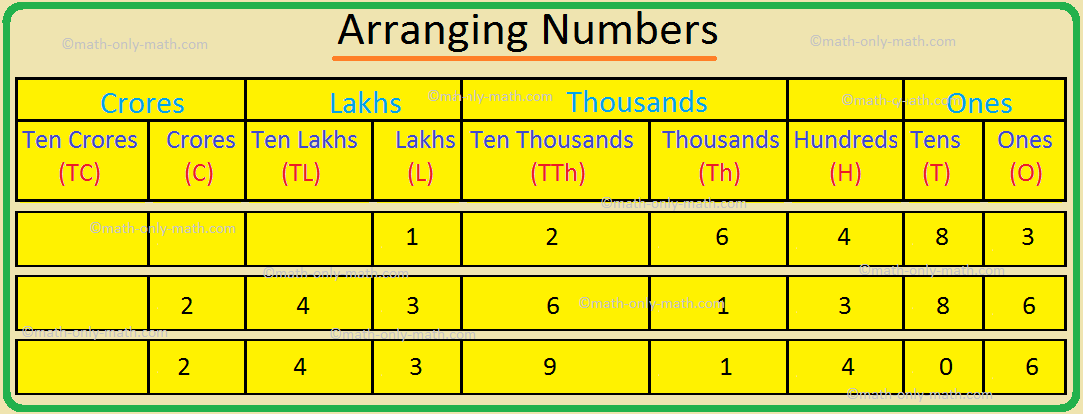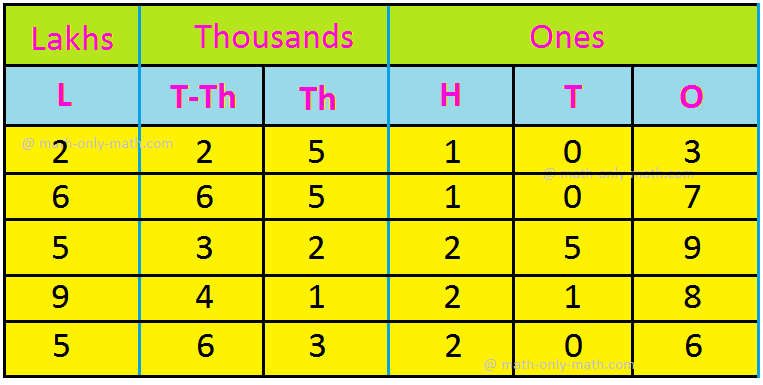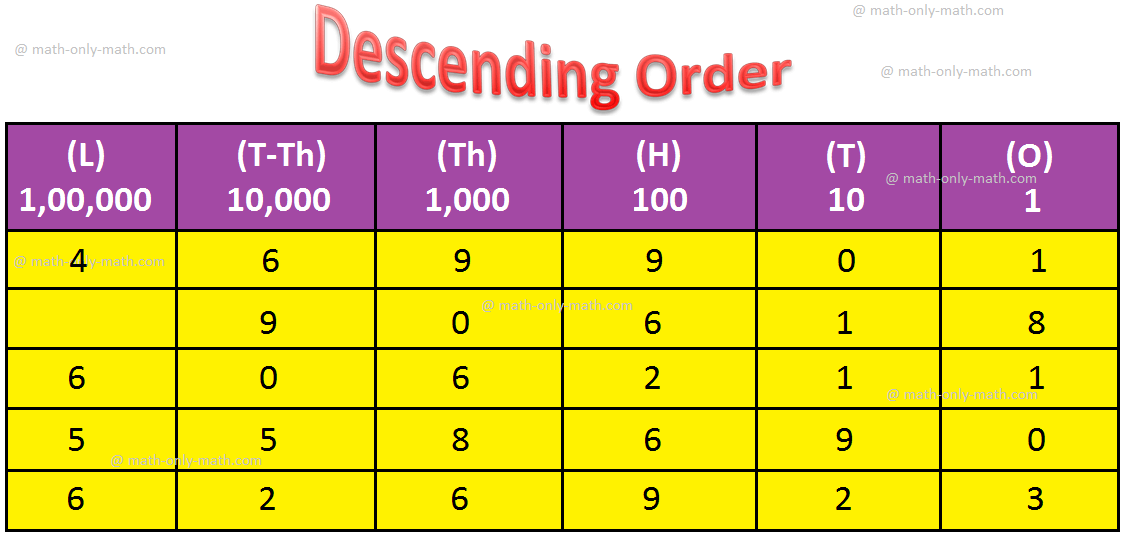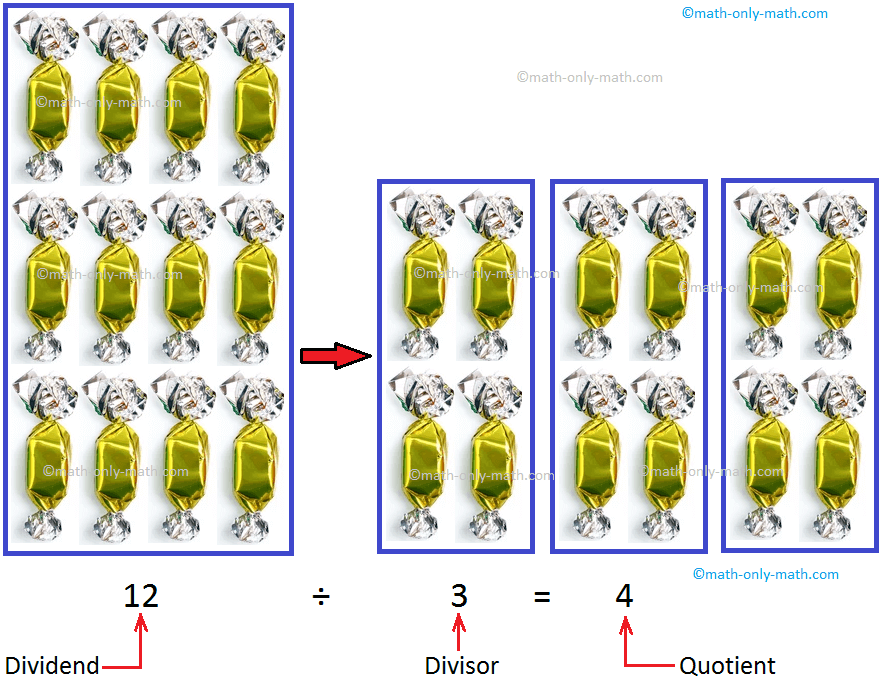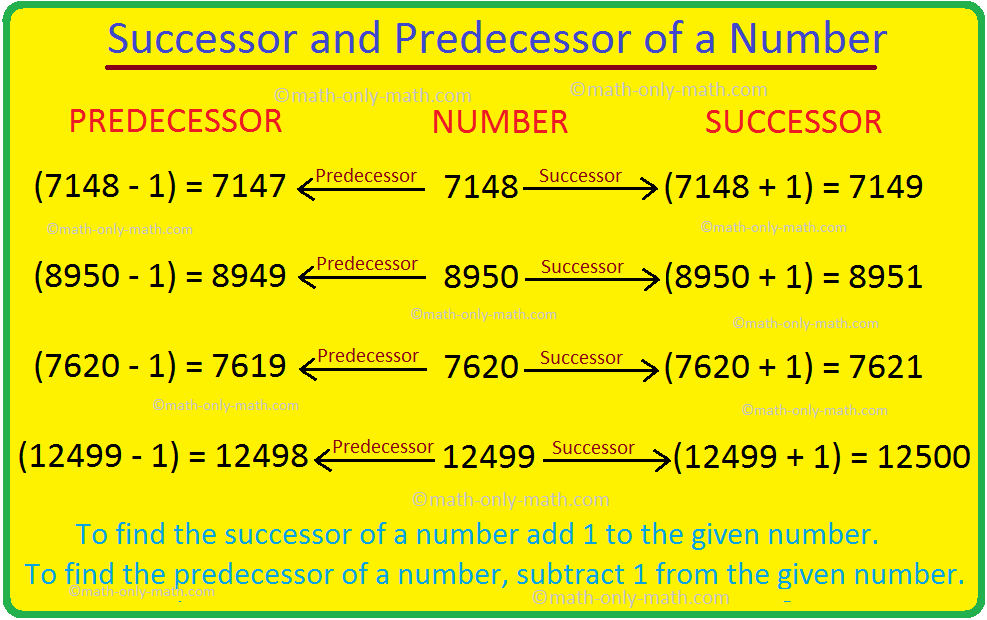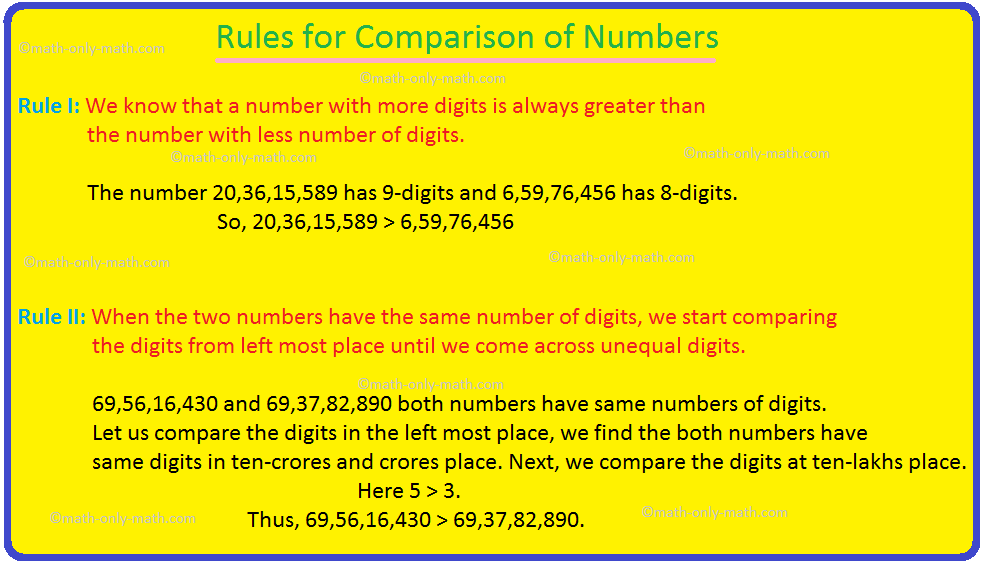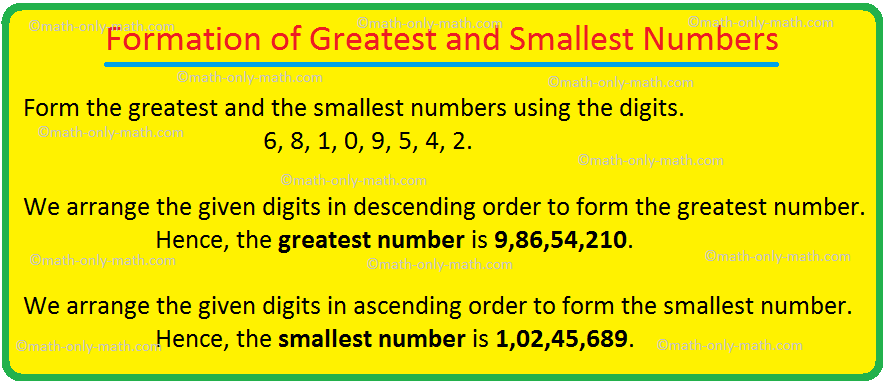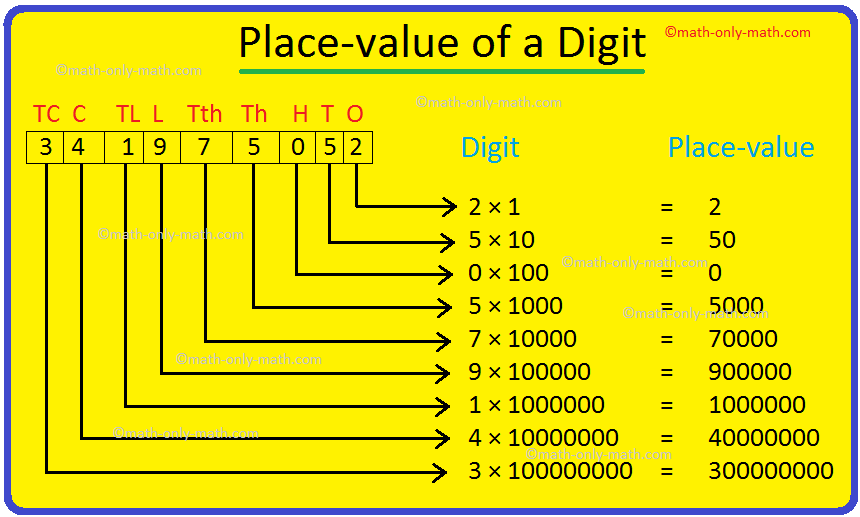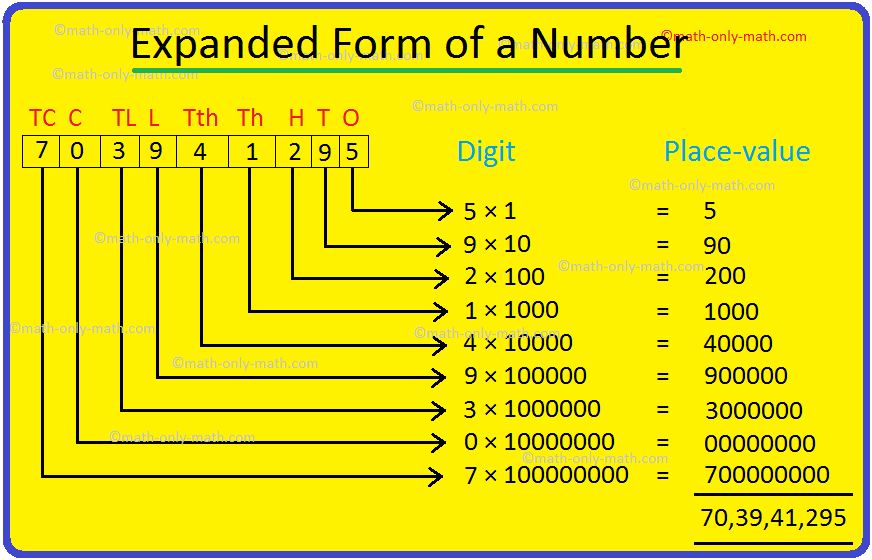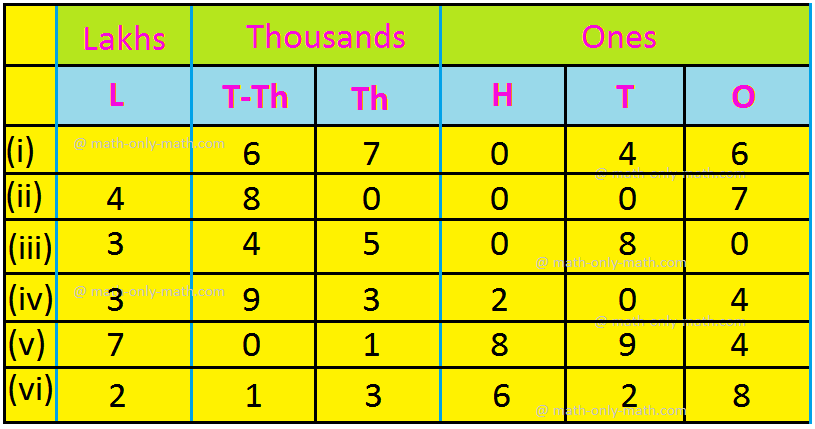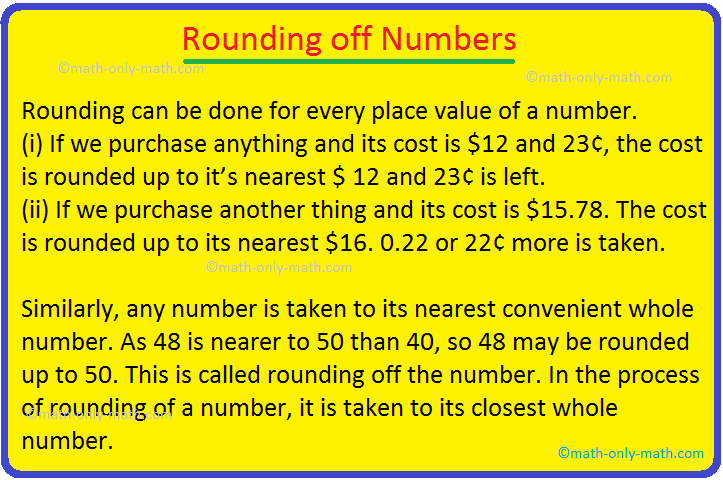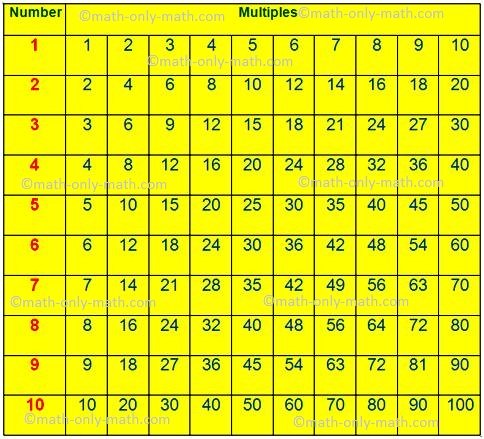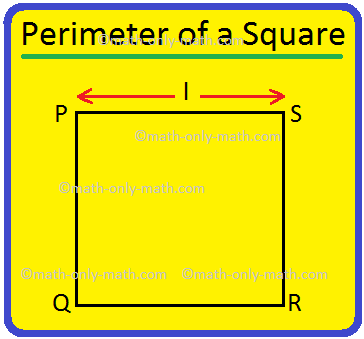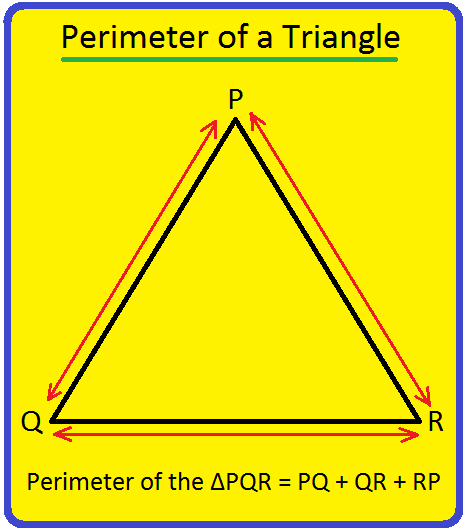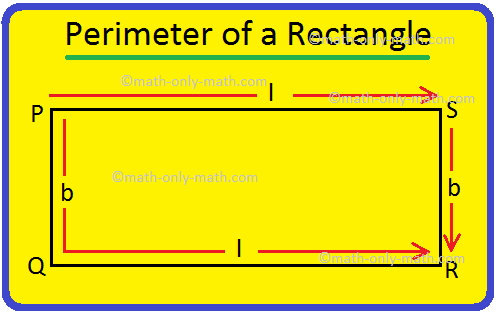Arranging Numbers
Arranging numbers in ascending order and descending order.
We know, while arranging numbers from the smallest number to the largest number, then the numbers are arranged in ascending order.
Suppose for example, 81, 97, 123, 137 and 201 are arranged in ascending order.
Vice-versa while arranging numbers from the largest number to the smallest number then the numbers are arranged in descending order.
Suppose for example, 187, 121, 117, 103 and 99 are arranged in descending order.
Examples on Arranging numbers in Ascending Order:
Ascending Order: When we write a given set of numbers in order from the smallest to the greatest, they are said to be in ascending order.
1. Write the following numbers is ascending order:
42734; 5358; 42876; 52287.
Solution:
Count the digits in each number.
5358 Is the smallest number as it has only 4 digits.
Line up the number accordingly to place value.
Begin comparing from the left.
5358 ← smallest number
42734
42876
7 < 8
52287 ← Largest number
The ascending order is 5358; 42734; 42876; 52287
2. Arranging numbers in ascending order:
3679; 3542; 3797; 3545
Solution:
The digit in the hundreds place in each number is 3.
On comparing the hundreds place; 3679; 3542; 3797; 3545
We find: 3797 to be the greatest and 3679 to be smaller.
On comparing the tens place in the two remaining numbers we find both
numbers to be the same. 3542; 3545
On comparing the ones place, we find 3545 > 3542
So, the ascending order is 3542 < 3545 < 3679 < 3797
3. Arrange 1,26,483; 2,43,61,386 and 2,43,91,406 in ascending order.
Solution:
Place the number one below the other.
By comparing the number of digits we find that the number 1,26,483 is the smallest number.
Next, comparing 2,43,61,386 and 2,43,91,406 we find that the digits at crores, ten lakhs and lakhs places are same.
Now, compare the digits at ten thousands place. Here, 9 is greater than 6.
So, 2,43,91,406 > 2,43,61,386
Hence, the given numbers in ascending order are
1,26,483; 243,61,386; 2,43,91,406
4. Arrange the following numbers in ascending order:
2,25,103; 6,65,107; 5,32,259; 9,41,218; 5,63,206
Solution:
First we arrange the given numbers in a place-value chart:
All the numbers have 6 digits. Comparing the digits at the lakhs place, we get 2 < 5 < 6 < 9.
Now we compare 5,32,259 and 5,63,206. Both these numbers have the same digits at the lakhs place.
So, we compare the digits at the ten-thousands place.
This digit is 3 in 5,32,259 and 6 in 5, 63, 206.
Since 3 < 6 5,32,259 <5,63,206
Thus 2,25,103 < 5,32,259 < 5,63,206 < 6,65,107 < 9,41,218
Hence, the given numbers arranged in ascending order are:
2,25,103; 5,32,259; 5,63,206; 6,65,107; 9,41,218.
Example on Arranging Numbers in Descending order:
1. Write in descending order:
32593; 60537; 28524; 57198
Solution:
Compare digits according to place value.
Descending order means arranging numbers from the largest number to the smallest number;
60537 > 57198 > 32593 > 28524
2. Arrange the following numbers in descending order:
4,69,901; 90,618; 6,06,211; 5,58,690; 6,26,923
Solution: First we arrange the given numbers in a place-value chart:
90, 618 is a 5-digit number. All others are 6-digit numbers.
So, 90,618 is the smallest number.
Comparing the digits at the lakhs place we get 6 > 5 > 4.
Now, we compare 6,06,211 and 6,26,923. Both the numbers have 6 at lakhs place.
So, we compare their digits at the ten-thousands place.
This digit is 0 in 6,06,211 and 2 in 6,26,923.
So, 6,06,211 < 6,26,923.
Thus, 6,26,923 > 6,06,211 > 5,58,690 > 4,69,901 > 90,618.
Hence, the given numbers arranged in descending order are:
6,26,923; 6,06,211; 5,58,690; 4,69,901; 90,618.
Worksheet on Ascending and Descending Order:
1. Rewrite the following numbers in the ascending order and descending order.
(i) 94257, 94527, 94752, 94725
(ii) 359421, 354921, 359412, 354912
(iii) 50050, 50500, 55000, 50005
Answer:
1. (i) Ascending Order : 94257; 94527; 94725; 94752
Descending Order : 94752; 94725; 94527; 94257
(ii) Ascending Order : 354912; 354921; 359412; 359421
Descending Order : 359421; 359412; 354921; 354912
(iii) Ascending Order : 50005; 50050; 50500; 55000
Descending Order : 55000; 50500; 50050; 50005
Related Concept
- Formation of Numbers.
- Finding Out the Numbers
- Names of the Numbers.
- Numbers Showing on Spike Abacus.
- 1 Digit Number on Spike Abacus.
- 2 Digits Number on Spike Abacus.
- 3 Digits Number on Spike Abacus.
- 4 Digits Number on Spike Abacus.
- 5 Digits Number on Spike Abacus.
- Large Number.
- Place Value Chart.
- Place Value.
- Problems Related to Place Value.
- Expanded form of a Number.
- Standard Form.
- Comparison of Numbers.
- Example on Comparison of Numbers.
- Successor and Predecessor of a Whole Number.
- Arranging Numbers.
- Formation of Numbers with the Given Digits.
- Formation of Greatest and Smallest Numbers.
- Examples on the Formation of Greatest and the Smallest Number.
- Rounding off Numbers.
4th Grade Math Activities
From Arranging Numbers to HOME PAGE
Didn't find what you were looking for? Or want to know more information about Math Only Math. Use this Google Search to find what you need.
Recent Articles
-
Perimeter of a Square | How to Find the Perimeter of Square? |Examples
Apr 25, 24 05:34 PM
We will discuss here how to find the perimeter of a square. Perimeter of a square is the total length (distance) of the boundary of a square. We know that all the sides of a square are equal. Perimete… -
Perimeter of a Triangle | Perimeter of a Triangle Formula | Examples
Apr 25, 24 05:13 PM
We will discuss here how to find the perimeter of a triangle. We know perimeter of a triangle is the total length (distance) of the boundary of a triangle. Perimeter of a triangle is the sum of length… -
Perimeter of a Rectangle | How to Find the Perimeter of a Rectangle?
Apr 25, 24 03:45 PM
We will discuss here how to find the perimeter of a rectangle. We know perimeter of a rectangle is the total length (distance) of the boundary of a rectangle. ABCD is a rectangle. We know that the opp… -
Dividing 3-Digit by 1-Digit Number | Long Division |Worksheet Answer
Apr 24, 24 03:46 PM
Dividing 3-Digit by 1-Digit Numbers are discussed here step-by-step. How to divide 3-digit numbers by single-digit numbers? Let us follow the examples to learn to divide 3-digit number by one-digit nu… -
Symmetrical Shapes | One, Two, Three, Four & Many-line Symmetry
Apr 24, 24 03:45 PM
Symmetrical shapes are discussed here in this topic. Any object or shape which can be cut in two equal halves in such a way that both the parts are exactly the same is called symmetrical. The line whi…
